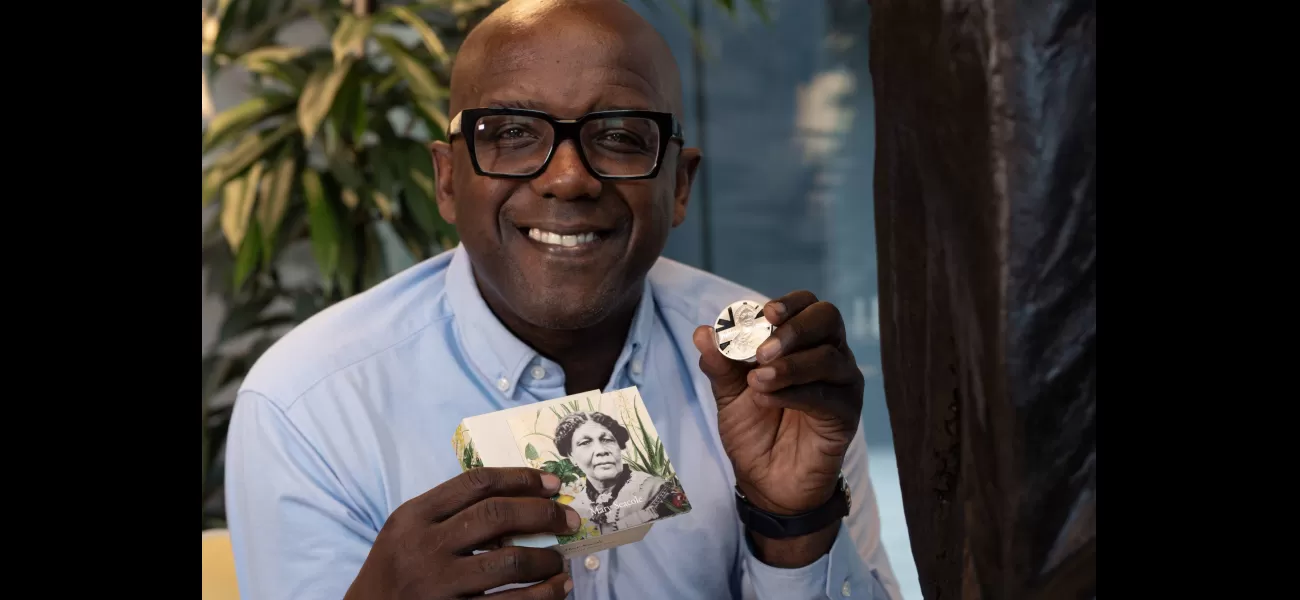Black nurse Mary Seacole honoured in new Royal Mint coin for her work treating British troops in Crimean War.
Mary Seacole selflessly provided aid to Crimean War soldiers at her own expense.
October 1st 2023.

Trevor Sterling, chair of Mary Seacole Trust, has expressed his joy and pride at the news that a 19th-century Jamaican nurse, Mary Seacole, will be featured on a Royal Mint coin - making her the first Black woman from outside the UK to be celebrated in such a way.
Mary was a pioneering figure who achieved a great deal during her lifetime. She was a nurse, a writer, a hotelier, a world traveller and a businesswoman. As Black History Month begins, it is fitting that the Royal Mint pays tribute to her life and legacy.
Trevor Sterling said: “This is a really significant historical moment. It pays tribute to Mary Seacole as a symbol of the NHS, diversity, social justice, and illustrates the immense contributions that have been made to this country. It's a very proud moment and I'm looking forward to travelling to Jamaica to honour Mary Seacole Day and to present the coin to the Jamaican High Commissioner. This is our way of saying thank you for what you have given us.”
Mary Seacole overcame racism and injustice to nurse soldiers during the Crimean War. The decision to create the commemorative coin follows a 12-year campaign that raised £500,000 for a statue in her honour at St Thomas’ Hospital in London - the first statue of a named Black woman in the UK. Sculptor Martin Jennings, who designed the statue, also created the design for the coin’s reverse, which features King Charles.
Mary was born in Jamaica in 1805 to a Scottish soldier and a Jamaican woman who was skilled in traditional medicine and ran a boardinghouse. Despite her experience as a healthcare worker, treating victims of cholera and yellow fever in Kingston, the British War Office denied her request to be sent to Crimea during the war.
Undeterred, Mary saved enough money to journey to Crimea on her own and set up a hotel to treat the wounded with a relative of her husband, Edwin. She was so well-loved by the soldiers she treated that they called her ‘Mother Seacole’.
When the war ended, Mary returned to Britain, penniless. However, due to the many letters of thanks sent from the personnel she had treated, she was brought into the national spotlight. In 1857, The Times’ war correspondent, William Russell, wrote of Mary: ‘I trust that England will not forget one who nursed her sick, who sought out her wounded to aid and succour them, and who performed the last offices for some of her illustrious dead.’
Though Mary’s legacy was all but forgotten in the century after her death in 1881, her 1957 best-selling autobiography, Wonderful Adventures of Mrs Seacole in Many Lands, was the first autobiography written by a Black woman in Britain. Mary herself wrote: ‘Time is a great restorer, and changes surely the greatest sorrow into a pleasing memory.’
Now, her legacy will be remembered in countless coins produced by the Royal Mint - an incredible tribute to a remarkable woman.
Mary was a pioneering figure who achieved a great deal during her lifetime. She was a nurse, a writer, a hotelier, a world traveller and a businesswoman. As Black History Month begins, it is fitting that the Royal Mint pays tribute to her life and legacy.
Trevor Sterling said: “This is a really significant historical moment. It pays tribute to Mary Seacole as a symbol of the NHS, diversity, social justice, and illustrates the immense contributions that have been made to this country. It's a very proud moment and I'm looking forward to travelling to Jamaica to honour Mary Seacole Day and to present the coin to the Jamaican High Commissioner. This is our way of saying thank you for what you have given us.”
Mary Seacole overcame racism and injustice to nurse soldiers during the Crimean War. The decision to create the commemorative coin follows a 12-year campaign that raised £500,000 for a statue in her honour at St Thomas’ Hospital in London - the first statue of a named Black woman in the UK. Sculptor Martin Jennings, who designed the statue, also created the design for the coin’s reverse, which features King Charles.
Mary was born in Jamaica in 1805 to a Scottish soldier and a Jamaican woman who was skilled in traditional medicine and ran a boardinghouse. Despite her experience as a healthcare worker, treating victims of cholera and yellow fever in Kingston, the British War Office denied her request to be sent to Crimea during the war.
Undeterred, Mary saved enough money to journey to Crimea on her own and set up a hotel to treat the wounded with a relative of her husband, Edwin. She was so well-loved by the soldiers she treated that they called her ‘Mother Seacole’.
When the war ended, Mary returned to Britain, penniless. However, due to the many letters of thanks sent from the personnel she had treated, she was brought into the national spotlight. In 1857, The Times’ war correspondent, William Russell, wrote of Mary: ‘I trust that England will not forget one who nursed her sick, who sought out her wounded to aid and succour them, and who performed the last offices for some of her illustrious dead.’
Though Mary’s legacy was all but forgotten in the century after her death in 1881, her 1957 best-selling autobiography, Wonderful Adventures of Mrs Seacole in Many Lands, was the first autobiography written by a Black woman in Britain. Mary herself wrote: ‘Time is a great restorer, and changes surely the greatest sorrow into a pleasing memory.’
Now, her legacy will be remembered in countless coins produced by the Royal Mint - an incredible tribute to a remarkable woman.
[This article has been trending online recently and has been generated with AI. Your feed is customized.]
[Generative AI is experimental.]
0
0
Submit Comment





